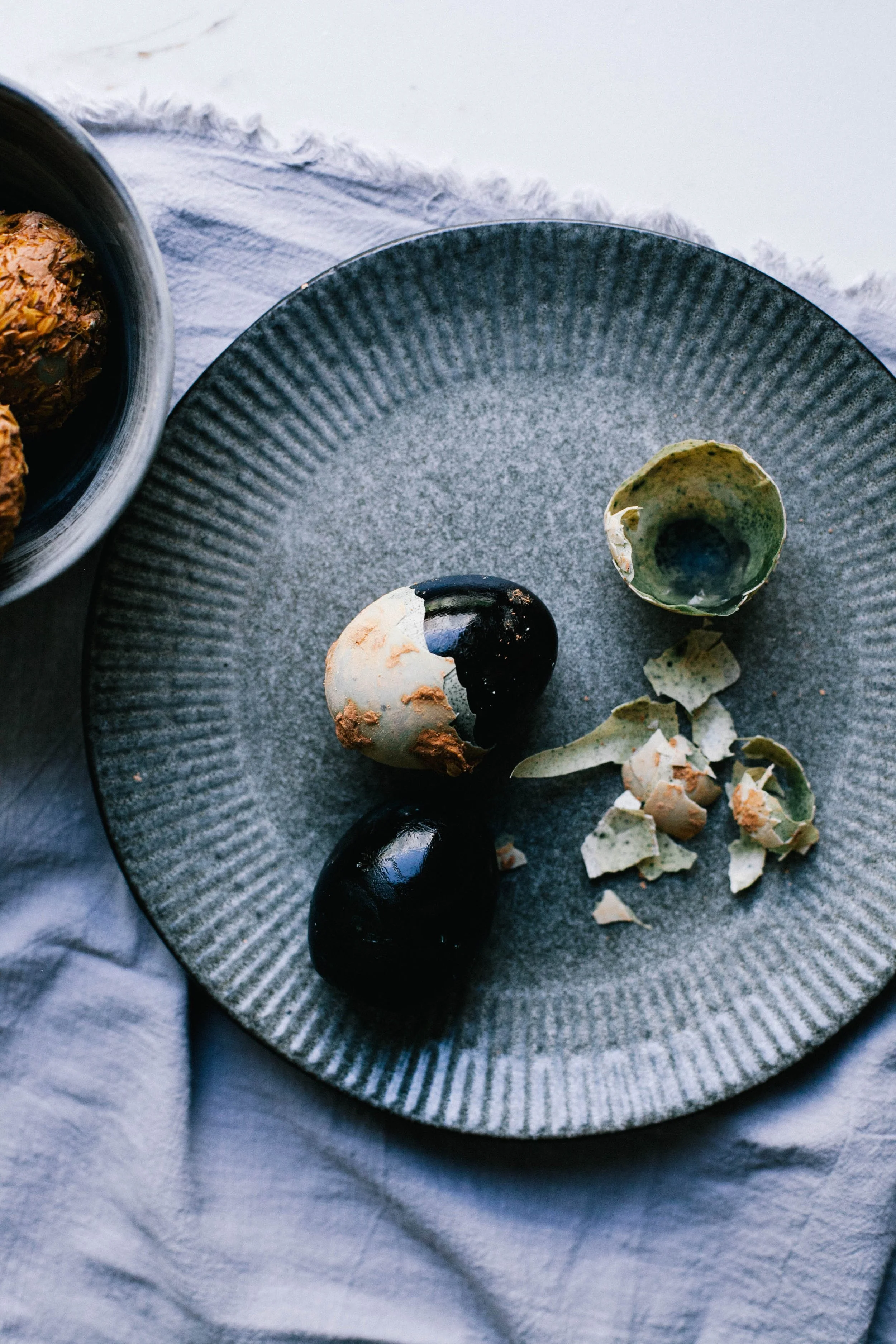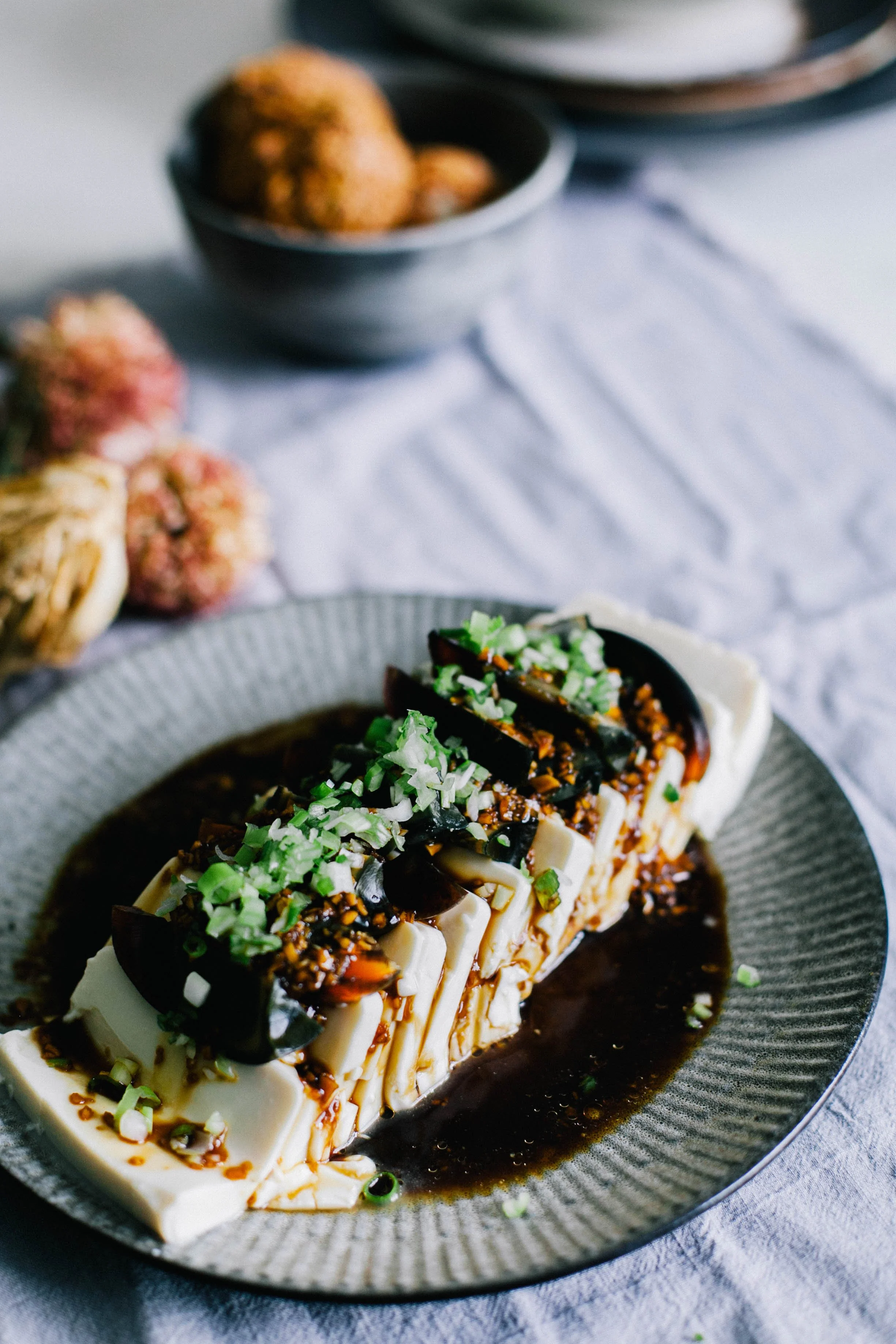
Silken Tofu & Preserved Egg
皮蛋豆腐
English: Silken Tofu & Preserved Egg
Chinese: 皮蛋豆腐
Pinyin: pidan doufu
Literal: Preserved egg tofu
Creamy, smooth tofu meets the soft, almost rubbery preserved egg — all served chilled in a salty, sour sauce that makes the perfect fresh summer dish. And summer lingered in Beijing this year, long past usual departure. Even in October, the air was still heavy with heat, and I found myself craving dishes like this — cool, clean, and quietly restorative.
Calling this dish ‘Northern’ might cause confusion. Silken tofu paired with preserved egg is found all over China, however, the Northern style is, not surprisingly, big, bold and assertive: black vinegar, raw garlic, perhaps a sprinkle of cai pu (pickled radish), or a few crushed peanuts for texture. Southern versions, by contrast, often skip the vinegar, leaning instead on chilli oil, fresh ginger, even the fragrance of fried dried shrimp or a touch of Sichuan peppercorn.
Preserved eggs tend to unsettle Western diners. Jet black where the white once was, with a green yolk - they look more like something from Halloween than the dinner table. But the flavour is surprisingly gentle: savoury, faintly earthy and not at all eggy.
The Chinese love a poetic name, and these are no exception. Known as thousand-year eggs or century eggs, the titles refer not to their age, but their how long they last. Legend has it they were discovered by a homeowner renovating his house, who found duck eggs that had fallen into a pool of slaked lime (or calcium hydroxide) he was using for mortar. Weeks later, he unearthed something extraordinary: the whites had turned to dark translucent jelly, the yolks a creamy grey-green.
The process isn’t fermentation, but chemistry. The eggs are “cooked” without heat, transformed by alkaline conditions. Traditionally, they were coated in a mixture of clay, salt, and sometimes tea, then left to cure for weeks or months. These days, most are made in factories, soaking the eggs in an alkaline brine for several days, then rolling them in clay to preserve the rustic look of the old ways.
Serves 3-4
Ingredients
1 block (300-400g) Silken Tofu (嫩豆腐, nen dou fu)
2-3 Preserved Eggs (皮蛋, pi dan)
2 garlic cloves - finely chopped
2 tablespoons light soy sauce
1 teaspoon Shanxi black vinegar
1 teaspoon sesame oil
½ teaspoon Sugar
2 spring onion - finely chopped
½ tablespoon pickled radish (cai pu (菜脯)) (optional)
½ tablespoon crushed peanuts (optional)
Method
Prepare the tofu. Silken tofu is incredibly delicate and breaks easily, so remove it carefully from the packaging and drain off the water. Slide it onto a serving plate that has a slight lip to catch any sauce from running.
Slice the tofu into 2.5cm slabs and then fan the slices onto the plate. You can also use a spoon to roughly break the tofu into large, irregular chunks. It won’t look as pretty, but it creates more surface area for the sauce.
Prepare the Preserved Eggs: Shell the preserved eggs, and then slice them into 6 wedges. If your knife is not the sharpest, the yolk sometimes sticks to it, ruining the presentation. If you run your knife under hot water and then make quick cuts, it should solve the issue.
Once the eggs are cut, arrange them on top of the tofu.
Make the dressing. In a small bowl, combine the garlic, light soy sauce, vinegar, sesame oil and and sugar. Stir until the sugar dissolves and then drizzle over the tofu and eggs.
Sprinkle the spring onion over the top, as well as the picked radish or peanuts (if using).
Best served immediately whilst the tofu is white and the punch of the sauce contrasts with the smooth, simple tofu.



